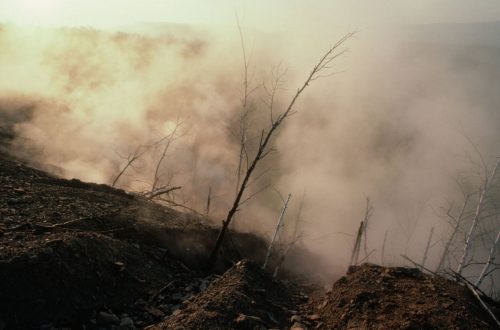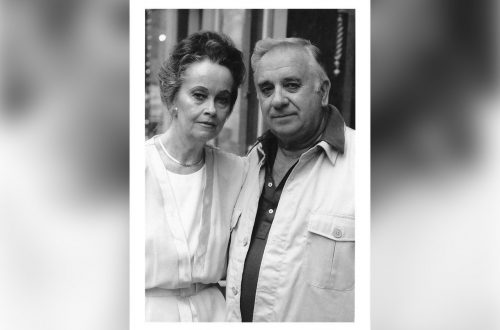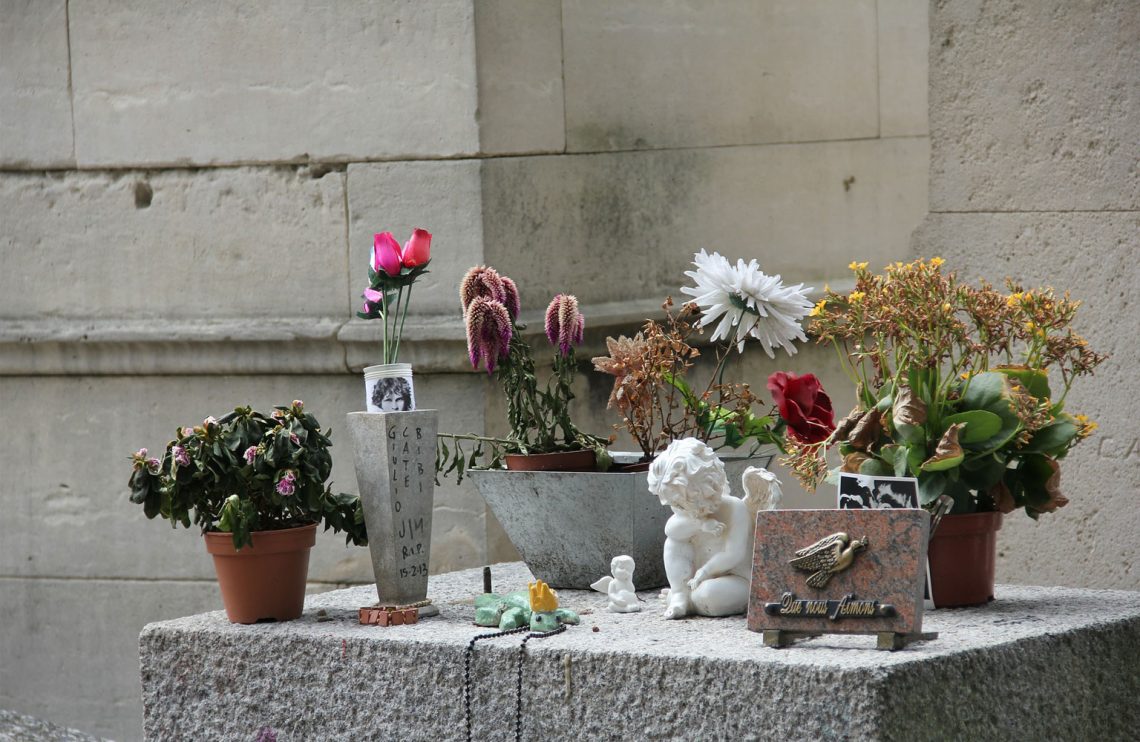
The Death Conspiracy Theories of Jim Morrison
By Maxim W. Furek
Contributor to Normal Paranormal
He was the charismatic lead singer of the Doors, a 1960s band blending rock, blues, and psychedelia in hit songs including “Light My Fire,” “Touch Me,” and “Riders on The Storm.” Their appeal coupled well-crafted studio songs with Jim Morrison’s overt sexuality, adolescent poetry, and Los Angeles swagger.
Wearing tight leather and calling himself the ‘Lizard King,’ Morrison’s stage act was typically a drunken, profanity-laced charade of self-destruction, but after he allegedly exposed himself during several concerts, the game was afoot. Morrison fled to Paris seeking refuge from the legalities surrounding a Miami ‘indecent exposure’ incident. He had avoided jail with a pending appeal, bail of $50,000, and a plane ticket to France.
He wandered the streets of the city, dog-eared folders of poetry in a plastic bag, under his arm, taking in the aura of the ghosts and poets who called this place home. He discovered the Rock and Roll Circus, a nightclub in the trendy Left Bank, and partied there ‘practically every night’ with the likes of Roman Polanski and Marianne Faithfull, the Beatles and Stones. Morrison, who envisioned himself an exiled American poet, arrived in The City of Lights in March 1971 with common-law wife Pamela Courson. Four months later he was dead.

His end was a sad affair. Morrison’s weight had increased, his face grown bloated. He wore a wild and scruffy beard and had lost much of his lean and dangerous rock star persona. His health suffered after years of heavy drinking and, following the ghosts of Jack Kerouac, Dylan Thomas, and Hank Williams, he staggered drunkenly to the end of that inevitable lost highway.
Morrison’s swollen body was found in the bathtub of his Right Bank apartment. He reportedly died of heart failure, but because there was no sign of foul play, and in accordance with French law, no autopsy was performed. Stranger still, the singer’s corpse was viewed by only a handful of individuals.
Then the rumors began. Some say Morrison faked his own death and is still alive, laughing somewhere at his morbid joke, while others have proposed a bizarre theory of international intrigue and murder.
Rock and Roll Circus
All the conspiracy theories had their roots in Morrison’s favorite bar. In an interview with USA Today, Sam Bernett, former nighttime manager of the Rock and Roll Circus, recalled that at around 1 a.m. on July 3, 1971, Morrison met with two drug dealers who sold him heroin for Pamela. Later, when Bernett noticed that Morrison had disappeared, his bouncer broke down the door of a locked toilet stall. Bernett recollected:
“The flamboyant singer of ‘The Doors,’ the beautiful California boy, had become an inert lump crumpled in the toilet of a nightclub.”
Bernett says he asked a doctor, a club customer, to examine the singer. “When we found him dead, he had a little foam on his nose, and some blood too, and the doctor said, ‘That must be an overdose of heroin.’ Bernett added that he did not see Morrison take heroin that night but said the singer was known to sniff the drug because he was afraid of needles.
But Morrison historian Laurie fervently argued against the theory that Morrison used heroin:
“I have found that Jim hated needles and never used heroin. Many of the fights that Jim and Pam had were ignited by the fact that he found out about her heroin use and did not approve of it. Jim went to Paris because he wanted to write, and also to become a poet but the demons of alcoholism finally caught up to him. He was downing two – three bottles of whiskey a day and was lucky to have lived as long as he did.”

Did he really die at the Rock and Roll Circus? According to Bernett’s recollection, the two drug dealers insisted Morrison was just unconscious and carried him out of the club. Though Bernett says he wanted to call the paramedics and authorities, the club’s owner ordered him to keep quiet to avert a scandal. Bernett believes the dealers brought Morrison’s body home and dropped it into the bathtub, a last attempt to revive him.
French law enforcement received a radically different explanation from Courson. She recalled they attended a late-night showing of the Robert Mitchum movie Pursued, then went out for dinner. Later they fell asleep after listening to records. Morrison awoke in the night feeling ill and took a hot bath. Courson found him dead in the tub and called a local French medical examiner, Dr. Max Vasille, who listed the cause of death as heart failure. Several people viewed the sealed coffin, including Doors manager Bill Siddons, who apparently chose not to view the corpse. Siddons official statement to the press said “Jim Morrison died of natural causes” and that “the death was peaceful.”
Singer Marianne Faithful furthered the confusion with an interview in Mojo. “I didn’t kill Jim Morrison, but I know who did,” she confessed. She said that her former lover Jean de Breteuil, a drug dealer, was responsible for Morrison’s overdose death. Faithful claimed that de Breteuil visited Morrison at 17 Rue Beautreillis:
“And he went to see Jim Morrison and killed him…I mean I’m sure it was an accident. Poor bastard. The smack was too strong? Yeah. And he died. And I didn’t know anything about this. Anyway, everybody connected to the death of this poor guy is dead now. Except me.”

Conflicting testimonies and observations from Pamela Courson, Sam Bernett, Stephen Davis, and Dr. Max Vasille stoked the embers of conspiracy. Courson, one of the few people to view Morrison’s body, died three years later, taking her secrets to the grave.
The weirdness continued after a series of bizarre events unfolded. A news blackout, lasting three days, did not report Morrison’s death until after the funeral. His parents and in-laws were prevented from seeing the corpse. Numerous media outlets investigated the lack of coverage including The Berkeley Barb, LA Free Press, and The Baltimore Morning Sun. Robert Hillburn, writing in The LA Times, called his obituary of Morrison “Why Morrison Death News Delay??” furthering the death controversy.
Mossad Assassination Team
Another conspiracy theory, surrounding his death, suggested that Morrison was killed by a Mossad assassination team, possibly the Kidon or Caesarea, operating under the top-secret ‘plausible deniability’ code. The term, coined by the CIA in the early 60s, describes the withholding of information from senior officials in order to protect them from repercussions should illegal CIA activities became public knowledge. That tactic rendered it impossible to prove a direct connection between the alleged Mossad assassination and Israel.
Morrison’s father, Rear Admiral George Stephen Morrison played a key role in this conspiracy theory. Morrison commanded U.S. naval forces in the Gulf of Tonkin during the Gulf of Tonkin Incident of August 1964, which triggered the Vietnam War.
During the Six-Day War, Israeli Defense Forces attacked and sank the United States intelligence ship Liberty, killing 34 Americans and wounding 171. The date was June 8, 1967. Israeli forces claimed they had misidentified the Liberty as a hostile Egyptian ship, but not everyone agreed, as one source stated:
“Commander Morrison opposed the official US Navy response to the attack and proposed an immediate and swift economic and military response against Israel for the attack on an official US Navy ship.”
Because of Morrison’s criticism, conspirators concluded that a Mossad hit squad killed his son as ‘payback.’
Retired Admiral Thomas Moorer, a former Joint Chiefs of Staff chairman, spent a year investigating the Israeli attack. As chief of naval operations at the time of the incident, he formed an independent panel with other military officials, including James Akins, former US ambassador to Saudi Arabia. Calling the sinking of the USS Liberty “one of the classic all-American cover-ups,” Moorer asked at a news conference, “Why would our government put Israel’s interests ahead of our own?”
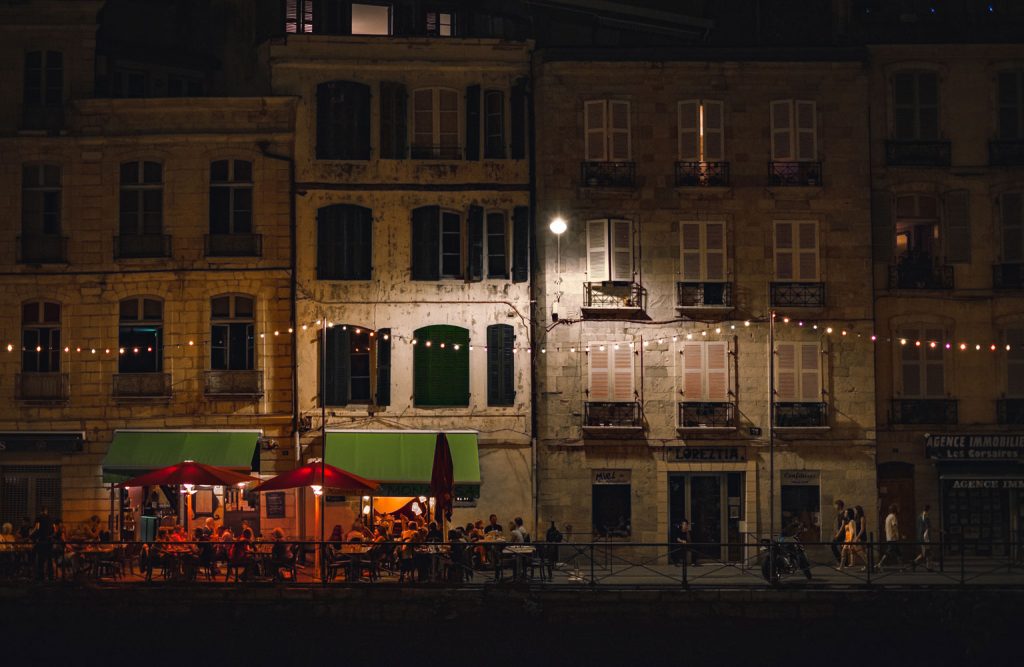
Like most conspiracy theories, a kernel of truth is conveniently surrounded by conjecture and innuendo. What is striking is that information about the sinking of the Liberty and Commander Morrison’s criticism have been largely ignored by the media.
Months before his demise, Morrison had gone into exile. His remains are allegedly buried in the sixth division of the Pere Lachaise cemetery, protected from the storm of youthful fanaticism by a metal fence. His tombstone remains the most visited and popular among celebrities, never without flowers, graffiti, or bottles of exotic liquors. A Greek inscription on his epitaph reads: Kata ton eaytoy daimon (True to his own spirit).
There is much surrounding Morrison’s death that we may never know. Some have speculated that Commander Morrison, with the means, motive, and opportunity, took his son’s body from the Paris gravesite and clandestinely repatriated it back to the United States. And again, we will never know.
It has been written that those who live by the sword, die by the sword. Morrison lived his life in the moment, intuitively sensing that his Dionysian journey would soon end. He died at age 27, a member of the ill-fated ‘Curse of 27 Club,’ and, ironically, like the lyrics to one of his songs, he broke on through to the other side, with a drink in one hand, and perhaps singing “This is the end, my friend.”
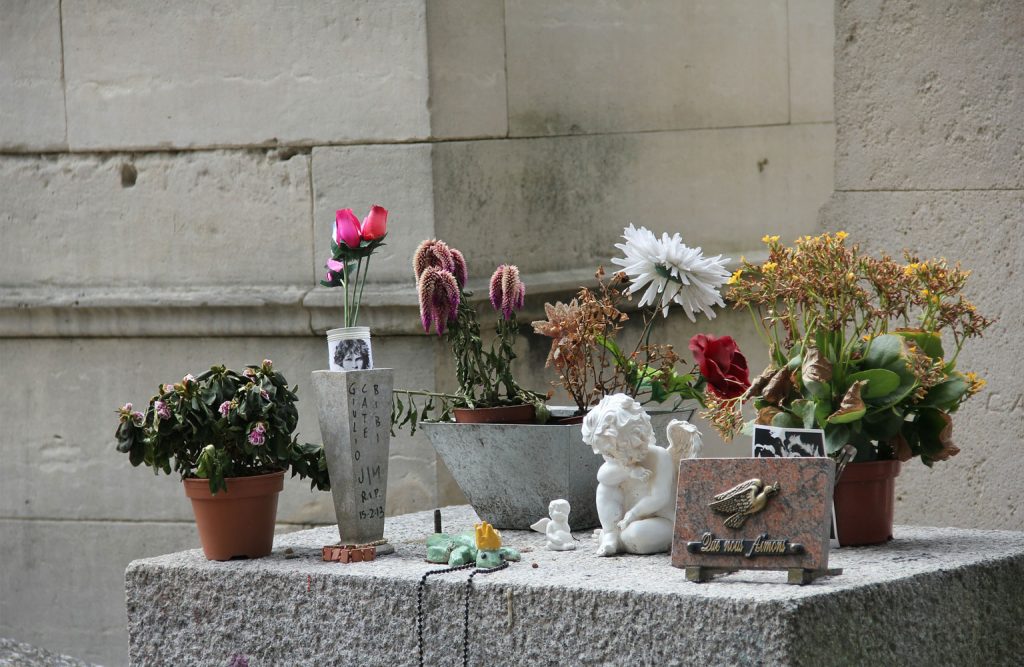
Maxim W. Furek is an avid student of the paranormal. His eclectic background includes aspects of psychology, addictions, mental health, and music journalism. His most recent work is Sheppton: The Myth, Miracle & Music.
Maxim has been interviewed on paranormal programs including Midnight in the Desert, Exploring the Bizarre, Darkness Radio, Darkness on the Edge of Town, Dark Sun Rising, and Para-X Radio.
For additional information, please contact him directly through his Facebook or LinkedIn.
References:
- Biography: Jim Morrison. (2015). Lifetime.
- Densmore, J. Riders on the Storm. New York: Dell Publishing.1990.
- Densmore, J. The Doors: Unhinged. Jim Morrison’s Legacy Goes on Trial. North Charleston, South Carolina: CreateSpace. 2013.
- Doland, A. (July 11, 2007). New questions about Jim Morrison’s death. USA Today.
- Final 24: Jim Morrison’s Last Hours – A Film. (January 10, 2014). PsychedelicAdventure.net.
- Forbes, G. (Director). (2011). Jim Morrison: No One gets Out of Here Alive. [Film]. Hollywood Heartbeat Productions, Inc. Alchemical Productions.
- Hopkins, J. and Sugarman, D. (1980). No One Here Gets Out Alive. New York: Warner Books.
- Huxley, A. The Doors of Perception. New York: Perennial Library.1954.
- Lerner, A. W. (2013). USS Liberty. Encyclopedia.com.
- Manzarek, R. Light My Fire: My Life With the Doors. New York: Berkley Boulevard Books. 1998.
- Manzarek, R. The Poet in Exile: A Novel. New York City: Thunder’s Mouth Press.2002.
- Matson, K. Short Lives. New York: William Morrow and Company, Inc.1980.
- Miles, B. Hippie. New York: Sterling Publishing Co., Inc. 2003.
- Pam Courson dies April 25, 1974. AXS Entertainment.
- Pareles, J., and Romanowski, P. (1983) Rolling Stone Encyclopedia of Rock & Roll. New York: Rolling Stone Press/Summit Books.
- Seay, D., with Neely, M. (Eds.). Stairway to Heaven. The Spiritual Roots of Rock ‘N’ Roll. New York: A Ballantine/Epiphany Book. 1986.
- “USS Liberty ~ Jim Morrison’s father” (That Jim of The Doors) and another degree of separation. (June 22, 2009). USS Liberty Cover Up.
- Weiss, J. (February 16, 2012). Surviving Doors members speak on Jim Morrison’s substance abuse. LAWeekly.


